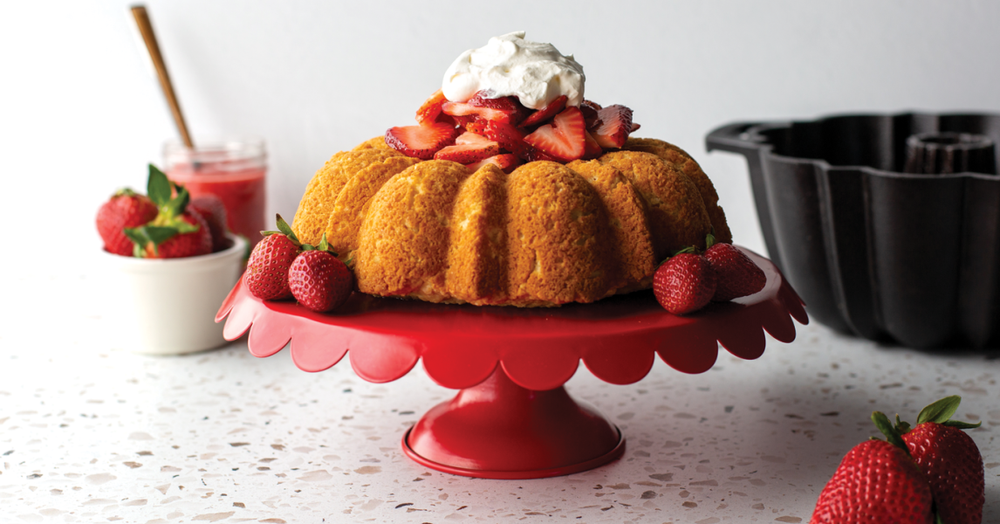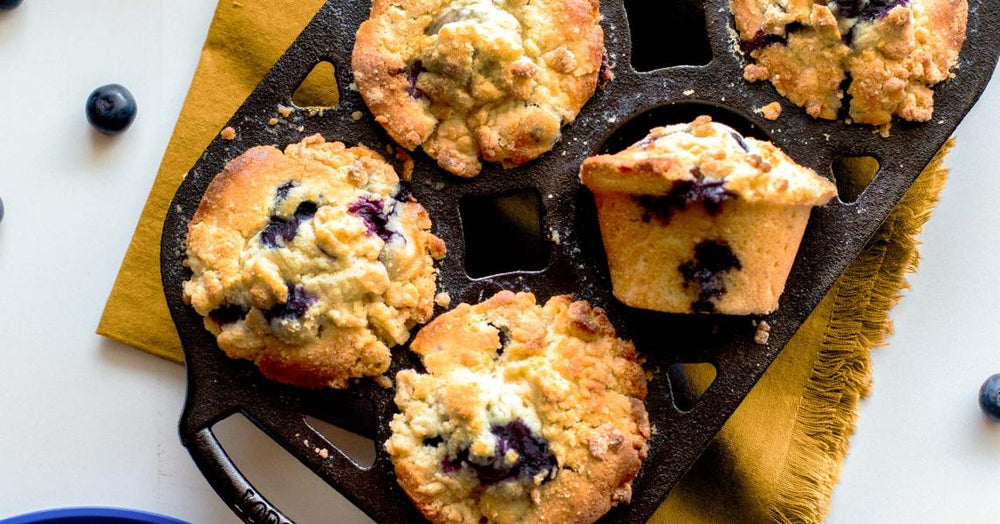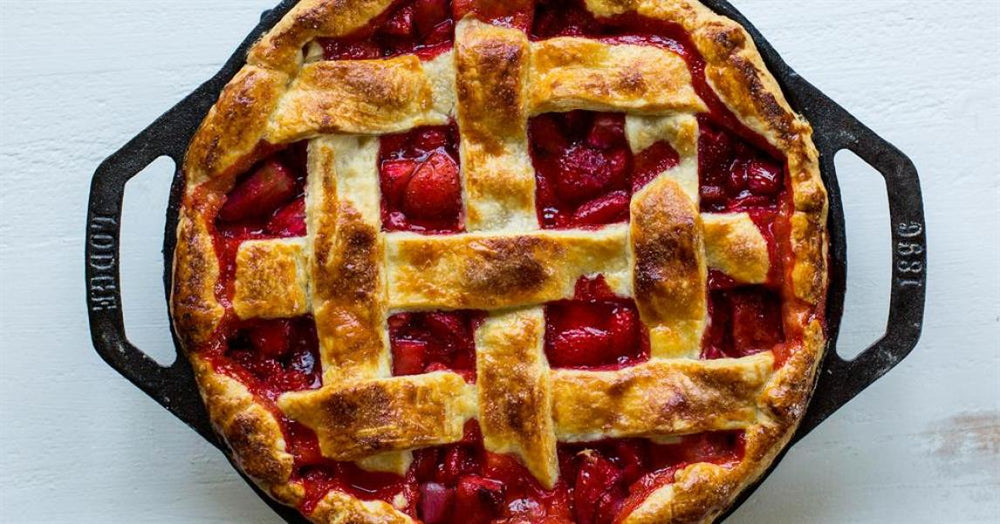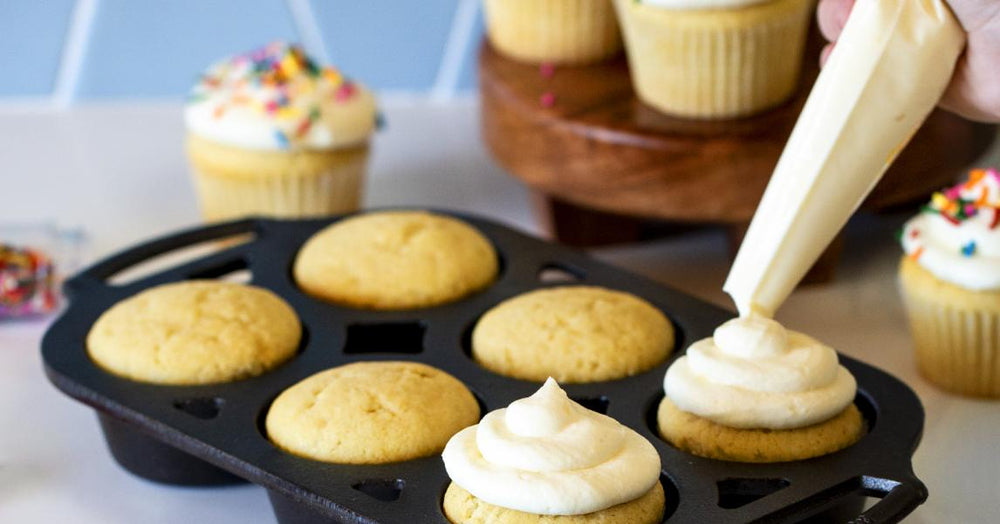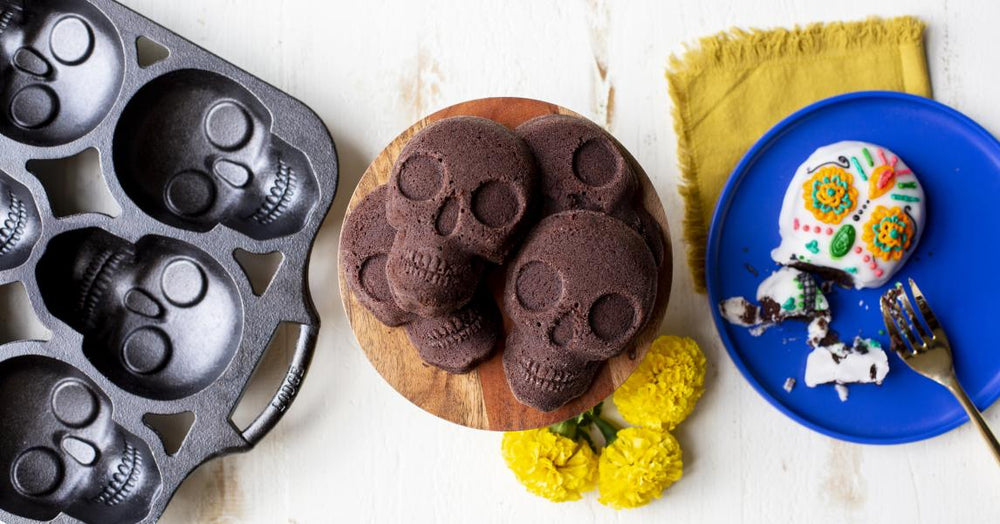Why Bake in Cast Iron
Baking pans are made of a wide range of materials, from glass to silicone and paper to metal. You can be careful, skilled, and meticulous when preparing your recipe, but once it’s in the oven, the laws of physics take over. The pan you choose has a lot to do with how heat travels to and through what you’re baking, and therefore has a big influence on your results.

Steady, even heat
Heat capacity is a material’s ability to retain energy; something cast iron is particularly adept at. In cooking, this means adding another cold chicken breast to a hot cast iron pan isn’t going to lower its temperature nearly as much as it would an aluminum pan. While slower to heat, cast iron’s density assures that it retains and distributes heat evenly across its surface. Once preheated, cast iron delivers quick, steady heat to whatever food you place on it. A cast iron pizza pan is an ideal example of this in action. Pie crusts also benefit from cast iron’s unique heat reservoir characteristic. If you’ve never baked a pie in a cast iron pie pan, you’re in for the best crust you’ve had in ages.
This steady, reliable heat transfer has always made cast iron a favorite for pancakes, biscuits, and cornbread. Scones and crepes also bake beautifully on cast iron.
.webp?v=1740395865824)
Versatile
The quality of absorbing heat and holding onto it makes cast iron ideal for any recipe that starts on the stove and ends in the oven. From searing a thick steak or spatchcocked chicken that finishes in the oven to caramelizing apples for a tarte tatin, cast iron is the best possible choice for this kind of cooking. That’s also one of the reasons cast iron has been a mainstay of campfire cooking, where the ups and downs of an open fire’s temperatures are evened out by cast iron’s heat retention.

And finally, forgiveness
No other type of pan can stand up to mistakes, neglect, and—OK, abuse—like cast iron. Scratch a nonstick pan? It’s over. Burn sugar onto a saucepan ½-inch thick? Time to say goodbye to that member of your kitchen crew.
No matter the mishap, unless cast iron is severely pitted, it can be brought back to perfect usefulness with cleaning and reseasoning. Cleaning can be as simple as a good scrub with chainmail. If you have rust on your cast iron, a trip through a self-cleaning oven cycle can do wonders. Even some time spent in the coals of a campfire can burn buildup off of your cast iron bakeware. However you get there, once your pan is clean, simply dry it well, coat it lightly with oil, and bake it in the oven at 450-500 degrees F for one hour (put a baking sheet or aluminum foil underneath it to catch any drips). All relationships should be this resilient.
What to bake in cast iron
Cast iron skillets, pans, and bakeware are beautiful, reliable, consistent, dependable, and last for generations. If you’re looking to create or carry on the tradition of sharing treasured family recipes, there’s no better friend and partner in your kitchen.


Susan Reid
Chef Susan Reid is the food editor of Sift Magazine, a baking publication by King Arthur Baking Company. In her spare time, Susan shares some of her recipes on her blog, The Well Plated Life.
